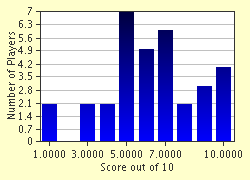Quiz Answer Key and Fun Facts
1. When the Romans conquered what is now Milan from the Celts in 222, they renamed the city what for the Latin for "middle plain"?
2. Despite popular belief, Roman Emperor Constantine I's Edict of Milan did not legalize Christianity in the Roman Empire as it had been accepted two years earlier in the Edict of Toleration. So what did the 313 A.D. Edict of Milan call for?
3. Over the next few centuries, Milan was conquered and ravaged by many different tribes and constantly changed hands as a result. Which person ruled Milan starting in 774 and called himself King of the Lombards even though he was King of the Franks?
4. Milan, after some more centuries of war, gained some independence when the Lombard League was formed in 1167 and when this league defeated Holy Roman Emperor Frederick I Barbarossa in which battle in 1176?
5. The Guelphs and Ghibellines were to warring factions that fought over control of parts of Italy. Milan was dominated by the Guelphs but in 1277, the German-backed Ghibellines seized control of the city and were ruled by which powerful Milanese family for over 200 years?
6. As the Black Plague returned to Europe in the 17th century, Milan's public health practices prevented large scale outbreaks. That was until 1630 when what event caused the Great Plague of Milan that last until the following year?
7. Which famous Milanese opera house was completed in 1778 and saw the first performances of some of history's greatest operas including "Tosca" in 1873 and "Madame Butterfly" in 1904?
8. Italy was unified in the 19th century (1860-70). As a result, Milan became one of Italy's most important northern cities and quickly became the economic headquarters of the region. The industrialization of Milan led to high inflation and in 1898, the city saw the Bava-Beccaris massacre over inflation. The Bava-Beccaris massacre is known as what in Italy?
9. Of which famous Italian Prime Minister could it be said that his career began in Milan's Piazza San Sepolcro in 1919 and ended in the Piazzale Loreto in 1945?
10. In the 1990s, what was the Tangentopoli that afflicted Milan and interrupted a decades long streak of peace and economic prosperity?
Source: Author
Joepetz
This quiz was reviewed by FunTrivia editor
bloomsby before going online.
Any errors found in FunTrivia content are routinely corrected through our feedback system.
